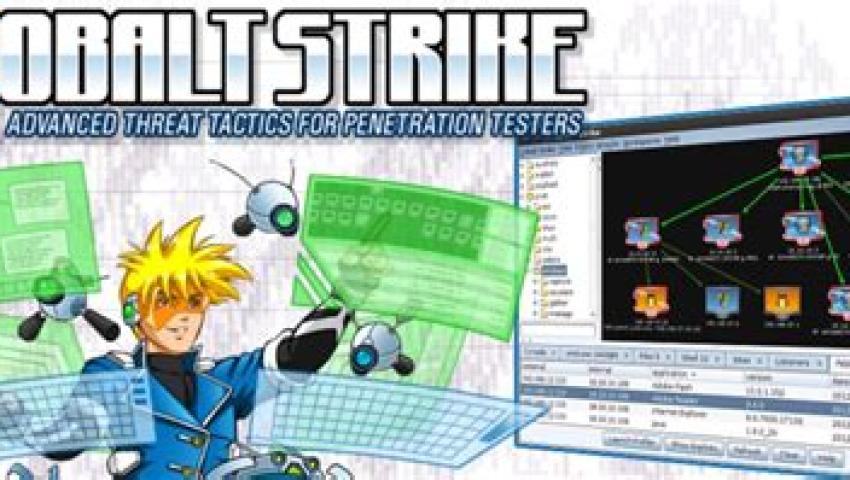
Cobalt Strike: The Double-Edged Sword of Cybersecurity
Cobalt Strike was developed by Raphael Mudge and released in 2012 as a commercial tool for penetration testers and red teams. The software provides a suite of tools for emulating real-world cyberattacks, including phishing campaigns, command-and-control (C2) infrastructure, and post-exploitation modules.
Introduction
Cobalt Strike is a popular penetration testing and red team tool initially designed for ethical hacking and network security assessments. It allows security professionals to simulate advanced persistent threats (APTs) and test an organization's defenses against sophisticated cyberattacks. However, this powerful software has become a favorite among cybercriminals and nation-state actors due to its robust features and ease of use.
In this article, we will explore the origins, capabilities, and methods of Cobalt Strike. We will also delve into case studies that showcase its use in both legitimate cybersecurity operations and notorious cyberattacks, highlighting its dual nature as a tool for both defense and offense.
What is Cobalt Strike?
Cobalt Strike was developed by Raphael Mudge and released in 2012 as a commercial tool for penetration testers and red teams. The software provides a suite of tools for emulating real-world cyberattacks, including phishing campaigns, command-and-control (C2) infrastructure, and post-exploitation modules. It is designed to simulate the tactics, techniques, and procedures (TTPs) used by advanced attackers, helping organizations identify vulnerabilities and strengthen their defenses.
Key Features of Cobalt Strike
- Beacon Payload: The core feature of Cobalt Strike is its Beacon payload, a stealthy malware implant that enables attackers to maintain persistent access to a compromised system. Beacon supports various attack techniques, including command execution, file transfer, and privilege escalation.
- Command-and-Control (C2) Framework: Cobalt Strike’s C2 framework allows attackers to remotely control infected machines. It supports multiple communication protocols, including HTTP, HTTPS, DNS, and SMB, making it versatile for different attack scenarios and harder to detect.
- Malleable C2 Profiles: One of the most powerful features is the Malleable C2 profiles. This allows attackers to customize the network traffic generated by Cobalt Strike, mimicking legitimate traffic patterns to evade detection by security systems.
- Red Teaming Capabilities: Cobalt Strike provides tools for red teaming exercises, such as phishing kits, social engineering techniques, and exploit delivery mechanisms. It helps simulate a full-fledged attack, from initial compromise to data exfiltration.
Legitimate Uses of Cobalt Strike
In its intended use, Cobalt Strike serves as a tool for ethical hacking and security testing. Organizations use it to assess their cybersecurity posture by simulating realistic attacks. Here’s how it is typically employed in legitimate scenarios:
1. Penetration Testing
Penetration testers use Cobalt Strike to identify and exploit vulnerabilities in a network. By deploying Beacon payloads, testers can simulate advanced threats, navigate through compromised systems, and demonstrate how attackers might move laterally within a network.
2. Red Team Operations
In red team exercises, Cobalt Strike is used to mimic the behavior of sophisticated threat actors. Red teams simulate attacks to test an organization’s detection and response capabilities, providing valuable insights into potential security weaknesses and gaps in incident response plans.
The Dark Side of Cobalt Strike: A Tool for Cybercrime
Despite its intended purpose as a legitimate cybersecurity tool, Cobalt Strike has become a staple in the toolkit of cybercriminals and malicious hackers. The software's advanced features, ease of customization, and widespread availability have made it an attractive option for launching real-world cyberattacks.
1. Unauthorized Use by Cybercriminals
Cracked versions of Cobalt Strike have been widely circulated on hacking forums, making it accessible to cybercriminals who do not have legitimate licenses. This has led to its frequent use in ransomware campaigns, data breaches, and espionage activities.
2. Evasion Capabilities
Cobalt Strike’s Malleable C2 profiles enable attackers to mimic legitimate network traffic, making it challenging for security tools to detect. This feature allows cybercriminals to conduct stealthy operations, bypassing traditional defenses like firewalls and intrusion detection systems.
Case Study 1: Ryuk Ransomware Attack
One of the most notorious uses of Cobalt Strike was during the Ryuk ransomware attacks, a series of highly targeted cyberattacks against large organizations worldwide. Ryuk operators often used Cobalt Strike as part of their post-exploitation toolkit to gain a foothold in compromised networks and deploy ransomware payloads.
Attack Chain
- Initial Access: The Ryuk operators typically gained initial access through phishing emails containing malicious attachments or through the exploitation of unpatched vulnerabilities in remote desktop services.
- Deployment of Cobalt Strike: Once inside the network, the attackers deployed Cobalt Strike Beacons to maintain persistence and establish communication with their C2 server.
- Lateral Movement and Privilege Escalation: Using Cobalt Strike’s capabilities, the attackers moved laterally across the network, escalating privileges and identifying valuable targets for encryption.
- Ransomware Deployment: After mapping the network and disabling security tools, the attackers deployed the Ryuk ransomware, encrypting critical files and demanding a ransom payment in Bitcoin.
Impact
The Ryuk ransomware campaign caused significant financial losses, with some estimates putting the total damage at over $150 million. Cobalt Strike played a key role in these attacks by enabling stealthy infiltration and coordination, underscoring its effectiveness as a post-exploitation tool.
Case Study 2: SolarWinds Supply Chain Attack
The SolarWinds cyberattack in 2020, attributed to a state-sponsored Russian group, was one of the most sophisticated and far-reaching cyber espionage campaigns in recent history. The attackers infiltrated thousands of organizations worldwide, including government agencies and Fortune 500 companies.
Role of Cobalt Strike
During the SolarWinds attack, Cobalt Strike was used as part of the post-exploitation toolkit. After compromising the supply chain by injecting malicious code into the SolarWinds Orion software update, the attackers used Cobalt Strike Beacons to control compromised systems and conduct reconnaissance.
- Stealth and Persistence: The use of Cobalt Strike allowed the attackers to remain undetected for months, conducting extensive surveillance and data exfiltration before the attack was discovered.
- Advanced Evasion: The attackers used customized Malleable C2 profiles to blend their traffic with normal network activity, making it extremely difficult for defenders to detect the malicious behavior.
Outcome
The SolarWinds attack highlighted the growing use of commercial penetration testing tools like Cobalt Strike in sophisticated cyber espionage campaigns. It exposed critical vulnerabilities in software supply chains and underscored the need for enhanced detection and monitoring capabilities.
The Ethical Dilemma of Cobalt Strike
The dual use of Cobalt Strike as both a cybersecurity tool and a weapon for cybercriminals raises significant ethical questions. Its developer, Raphael Mudge, initially created the tool to help organizations improve their defenses against APTs. However, the widespread misuse of cracked versions has sparked debates about the responsibility of tool developers and the ethical implications of creating such powerful software.
1. Licensing and Regulation
One potential solution to curb the misuse of Cobalt Strike is stricter licensing and regulation. Ensuring that only verified, legitimate users have access to the software could reduce its availability to cybercriminals. However, this approach is complicated by the existence of cracked versions that circulate on the dark web.
2. The Role of Security Companies
Security companies that use Cobalt Strike for legitimate purposes are increasingly under pressure to ensure their tools are not repurposed by malicious actors. Some have called for the development of detection mechanisms that can specifically identify Cobalt Strike’s activity on networks, even when it uses Malleable C2 profiles.
Case Study 3: Emotet and Cobalt Strike
In 2021, the infamous Emotet botnet was dismantled by an international law enforcement operation. Before its takedown, Emotet frequently used Cobalt Strike as part of its infection chain to facilitate additional malware deployment, including ransomware.
Integration with Emotet
- Infection Chain: Emotet initially infected victims via phishing emails, deploying payloads that downloaded Cobalt Strike Beacons onto compromised systems.
- Multi-Stage Attack: Once the Beacon was deployed, the attackers used Cobalt Strike to perform reconnaissance, escalate privileges, and deliver additional malware like TrickBot or Ryuk ransomware.
- Impact on Victims: Emotet’s use of Cobalt Strike made it a formidable threat, capable of executing complex, multi-stage attacks on a global scale.
Conclusion
Cobalt Strike represents a prime example of the double-edged nature of cybersecurity tools. While it is invaluable for red teams and penetration testers, its misuse by cybercriminals and state-sponsored actors has turned it into a significant threat. The software’s advanced features, particularly its ability to evade detection and mimic legitimate traffic, have made it a favorite in the cybercrime community.
As cybersecurity continues to evolve, the ethical and regulatory challenges surrounding tools like Cobalt Strike will remain a critical issue. Organizations must invest in robust threat detection and response capabilities to mitigate the risks posed by such sophisticated tools. Meanwhile, developers and the cybersecurity community must navigate the fine line between providing powerful testing tools and preventing their misuse, ensuring that the tools designed to protect us do not end up being used against us.
Alex Ananenko
Leave a comment
Your email address will not be published. Required fields are marked *


